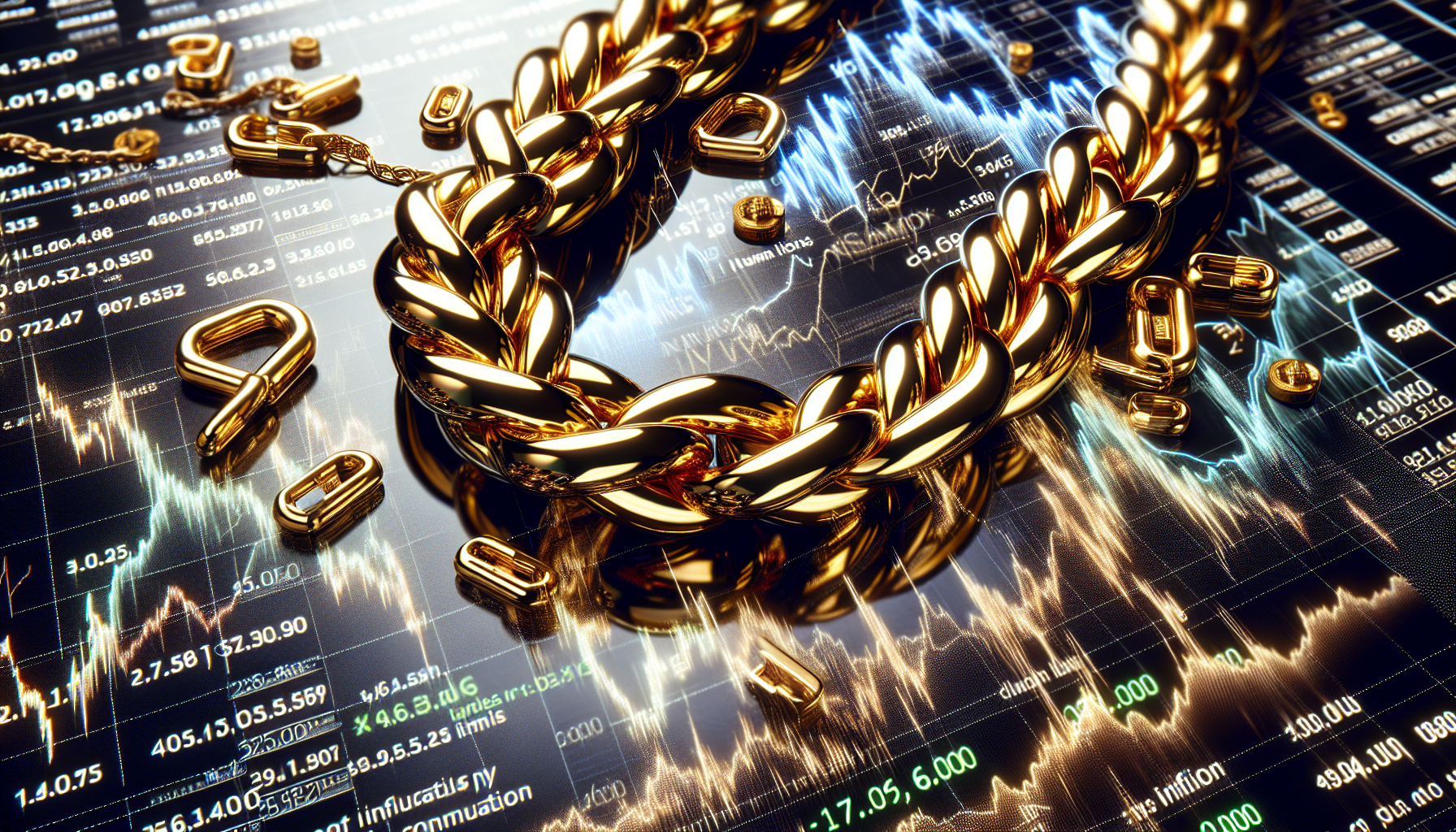
tl;dr
As gold surges to $4,000 per ounce amid economic turmoil, the jewelry industry faces a crisis, forcing brands to raise prices, innovate, or risk collapse.
**Gold Prices Soar to Record Highs, Pressuring Jewelry Industry Amid Economic Uncertainty**
Amid global economic turbulence, the price of gold has surged to historic levels, creating both opportunities and challenges for the jewelry industry. Over the past year, gold prices have climbed more than 50%, with the metal hitting a record $4,000 per troy ounce in early September—a milestone that underscores its role as a safe-haven asset amid rising fears of recession, inflation, and geopolitical instability.
### **A Gold Rush Driven by Uncertainty**
Analysts attribute the spike to a combination of factors, including lower interest rates, a weakening U.S. dollar, and heightened political uncertainty. Goldman Sachs and UBS have both predicted continued upward momentum, with UBS forecasting inflows of 830 metric tons of gold this year—nearly double their initial estimate. Central banks, particularly in emerging markets, are also fueling the trend, diversifying their reserves by increasing gold allocations. The World Gold Council’s July survey revealed that 95% of central banks expect global gold holdings to rise in the next year.
“This is a fear indicator,” said Louisa Schneider, CEO of Rowan Piercing Studio, highlighting the link between gold’s ascent and economic anxiety. “It’s not about demand for gold in jewelry or manufacturing, but rather hoarding driven by uncertainty around the U.S. dollar.”
### **Impact on Jewelry Companies**
For midsize jewelry brands aiming to offer affordable luxury, the gold price surge is a double-edged sword. Companies like Mejuri, which prides itself on accessible gold jewelry, have been forced to raise prices to offset rising costs. “We’re streamlining our supply chain and innovating new products like 10-karat solid gold to maintain affordability,” a spokesperson said.
Large retailers are also feeling the strain. Pandora reported an 80-basis point hit to its margins in Q2 due to higher gold and silver prices, while Signet saw over a 30% increase in gold costs. To counterbalance these pressures, some brands are turning to alternative materials. BaubleBar, for instance, has seen strong demand for its “demi-fine” jewelry—18k gold-plated sterling silver pieces priced between $50 and $150. “It offers high-quality appeal at a lower price point,” co-founder Daniella Yacobovsky told CNBC.
### **Strategies for Survival**
Businesses are adopting varied strategies to navigate the crisis. Alexis Bittar, CEO of his eponymous jewelry brand, has focused on gold-plated pieces to reduce costs, while cautiously raising prices on select items. “Consumers aren’t overly concerned about gold prices, but they have unconscious price points they’re willing to stick to,” he noted.
Rowan Piercing Studio, which uses 14k gold-coated materials for piercings, remains “somewhat insulated” due to health and safety standards. However, the company still raised prices in Q3, a move its customers have accepted due to its specialized services.
### **A Broader Economic Warning**
The gold price surge is not just a jewelry industry issue—it’s a reflection of deeper economic vulnerabilities. With global supply chains disrupted by trade policies and central banks accumulating gold at an unprecedented rate, the metal’s climb signals a lack of confidence in traditional financial systems.
For smaller brands, the challenge is clear: adapt or risk being priced out of the market. As Schneider noted, “This is an inflection point. The pressure is greatest for companies serving non-luxury consumers who can’t absorb price hikes.”
As gold continues to climb, the jewelry industry’s ability to innovate and balance cost management with consumer expectations will be tested. For now, the metal’s record highs serve as a stark reminder of the economic forces reshaping markets worldwide.